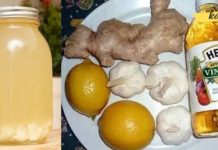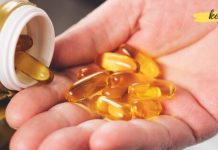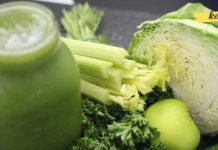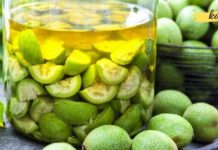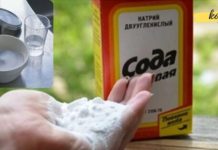Salt Deposits on the Neck: Understanding Cervical Osteochondrosis and How to Relieve the Pain

When people say that “salt has accumulated in the neck,” what they are usually describing is a condition known in medical terms as cervical osteochondrosis. This condition affects the cervical region of the spine, which is one of the most delicate and important parts of the human body. Because so many vital blood vessels and nerves pass through this area, even small disturbances in the cervical spine can lead to serious consequences for overall health.
The neck is not just a mechanical structure that holds up the head; it is a crucial passageway that ensures the proper flow of blood, oxygen, and nutrients to the brain, face, and upper body. When cervical osteochondrosis develops, the intervertebral discs and surrounding tissues begin to degenerate, leading to a wide range of unpleasant symptoms. These include:
Chronic headaches and tension in the skull area.
Discomfort or pain in the arms, radiating from the neck down to the shoulders, forearms, and fingers.
Tingling sensations or numbness in the extremities.
Muscle weakness and fatigue, even after light activity.
Dizziness and ringing in the ears, sometimes accompanied by loss of balance.
Reduced vision or hearing due to compromised blood flow.
Nausea and occasional vomiting when the nerves are strongly affected.
These symptoms make it clear that cervical osteochondrosis is more than a minor inconvenience—it is a condition that directly influences daily comfort, work performance, and long-term well-being.
Causes of Cervical Osteochondrosis
Understanding the causes is the first step in prevention and treatment. While cervical osteochondrosis is strongly connected to the natural aging process and the gradual degeneration of cartilage tissue, several other contributing factors can accelerate its development:
Spinal anomalies present from birth or acquired through trauma.
Prolonged physical strain, such as heavy lifting or repetitive movements that put stress on the cervical spine.
Genetic predisposition, which can make some people more vulnerable.
Poor posture, especially common among office workers or students who spend long hours hunched over a desk.
Excess body weight, which causes metabolic disturbances and increases the load on intervertebral discs.
Low physical activity, leading to weaker muscles that can no longer properly support the spine.
Fortunately, these risk factors can often be reduced. By maintaining regular physical activity, practicing proper posture, eating a balanced diet, and living a generally healthy lifestyle, the chances of developing severe cervical osteochondrosis can be minimized. Prevention is always easier than treatment, but for those who already experience symptoms, there are natural remedies that can help relieve discomfort.
A Natural Remedy for Relief
Modern medicine offers various treatments, from medications to physical therapy, for managing cervical osteochondrosis. However, many people also look for natural home remedies that can be prepared with simple ingredients and provide noticeable relief. One such method involves using a specially prepared compress made from household foods and herbs.
Ingredients Needed:
1 medium-sized potato
1 tablespoon of honey
1 tablespoon of melted butter (clarified butter works best)
1 tablespoon of salt
4–5 cloves of garlic, finely grated
1 teaspoon of ground ginger
4–5 fresh radishes, grated
Preparation Steps:
Peel and finely grate the potato using a kitchen grater.
Add the honey, melted butter, grated garlic, salt, ginger, and grated radish to the potato.
Mix all the ingredients thoroughly until you achieve a uniform paste-like mass.
Transfer this mixture onto a clean piece of gauze or cheesecloth to form a compress.
Application Method:
Place the compress gently onto the affected area of the neck.
Cover it with a piece of parchment paper or plastic wrap to lock in the heat.
Wrap the neck with a warm scarf or cloth to encourage circulation.
Keep the compress in place for approximately 2 hours.
After removing it, wipe the skin with a warm towel and gently massage in a few drops of fir oil, which further supports muscle relaxation and blood flow.
For best results, repeat this process once a day for 7–10 consecutive days.
Why This Remedy Works
Each ingredient in this natural recipe plays a specific role:
Potato acts as a soothing base with mild anti-inflammatory properties.
Honey is well-known for its healing and antibacterial qualities, reducing irritation.
Butter helps moisturize the skin and enhances the absorption of other compounds.
Salt stimulates circulation and helps draw out excess fluid from inflamed tissues.
Garlic contains sulfur compounds with strong anti-inflammatory and analgesic effects.
Ginger improves blood flow and reduces stiffness in muscles and joints.
Radish adds a warming effect, encouraging relaxation of the muscles and promoting healing.
Together, these ingredients create a powerful synergy that not only relieves pain but also supports the regeneration of tissues and improves local circulation.
Additional Lifestyle Tips
While this home remedy can bring relief, it should be combined with lifestyle adjustments for long-lasting results:
Exercise regularly: Gentle stretching, yoga, or swimming can strengthen the neck and back muscles, reducing the strain on the cervical spine.
Maintain good posture: Keep your head aligned with your shoulders, avoid slouching, and take breaks if you work long hours at a desk.
Stay hydrated: Proper hydration supports the elasticity of cartilage and intervertebral discs.
Sleep correctly: Use a supportive pillow that keeps the neck in a neutral position.
Eat a nutrient-rich diet: Include foods high in calcium, magnesium, and omega-3 fatty acids to support joint and bone health.
By combining proper care, healthy habits, and occasional natural remedies like the compress described above, it is possible to control symptoms and significantly improve quality of life.
Final Thoughts
Cervical osteochondrosis—or the so-called “salt deposits on the neck”—is not just a cosmetic or minor issue. It is a real health condition that can negatively impact many systems in the body if left untreated. Fortunately, through a combination of prevention, lifestyle changes, and natural remedies, you can manage the discomfort and reduce the progression of the disease.
This simple home recipe, using everyday ingredients such as potato, honey, garlic, and ginger, offers a safe and effective way to relieve neck pain, reduce inflammation, and restore mobility. Remember: the sooner you take steps to support your cervical spine, the better your chances of staying active, healthy, and pain-free.





